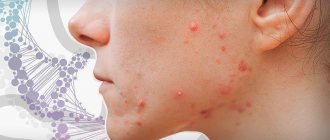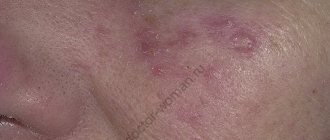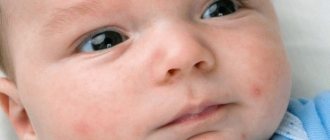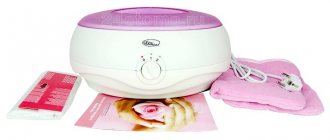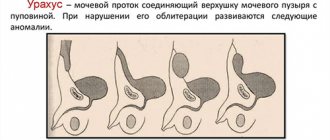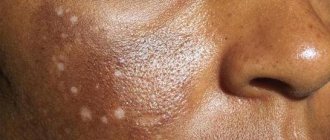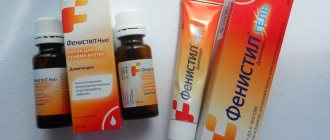Dermatovenereologist (cosmetologist)
Baichorova
Marua Azretovna
20 years of experience
Dermatologist (cosmetologist)
Make an appointment
The constant process of skin renewal can cause blockage of the sebaceous glands and follicles. Getting into microscopic holes, excess sebum and dead cells of the exfoliated epidermis lead to the appearance of blackheads or pimples. Experts have united them under the name “comedones”. The situation is aggravated by the lack of proper skin care, exposure to unfavorable sanitary conditions, as well as the intense production of sebum, the excess of which clogs the ducts and hair follicles.
The vast majority of cases of comedones are observed on oily facial skin: on the nose, forehead and cheeks. According to most medical specialists, such a pathology is true evidence of hormonal imbalances, hidden dermatological problems and malfunctions of the liver and gastrointestinal tract. Therefore, patients who experience discomfort from their appearance are advised not to focus on the cosmetic problem, but to undergo a comprehensive examination to identify possible diseases of the internal organs.
Pathogenesis
Comedones occur as a result of excess sebum synthesis and disruption of the keratinization process - the formation and exfoliation of cells in the stratum corneum of the skin. As a result, characteristic plugs are formed at the mouth of the hair follicles, which fill them. Thus, sebum loses the opportunity to leave the follicle and begins to accumulate in it, forming cysts.
The removal of toxins through the pores of the skin is also impaired. They interact with sebum, forming a thick, glue-like mass. A mixture of toxins, sebum, partially released from the narrowed mouth of the follicle, as well as skin bacteria and dust, becomes dark under the influence of oxygen. This is manifested by the formation of black dots on the skin. When the orifice is completely blocked, the follicle greatly increases in volume, which leads to the formation of a white nodule.
Open comedones on the back and acne on the face. Photo: Chinese Medical Journal / Open-i (CC BY-NC-SA 3.0) and Roshu Bangal / Wikipedia (CC BY-SA 4.0)
How to fight
What to do when your facial skin quickly becomes oily? Modern cosmetology offers a huge number of different solutions, effective to one degree or another. However, they are not at all a panacea for any problems in the body. Therefore, it is advisable to first visit a doctor who will help to accurately determine the cause of such phenomena. Only after all health issues have been resolved can you turn to the remedies described below.
Injection cosmetology
It involves influencing the skin with injections. At the same time, various drugs are injected into the middle or uppermost layers using microneedles, which in our case combat the increased secretion of sebum.
Ozone therapy
The main effect of this procedure is based on improving the delivery of ozone molecules into cells, which actively stimulates the antioxidant system. In the gas injection zone, the metabolic rate increases significantly, therefore, the elimination of toxins and other “garbage” is accelerated. At the same time, immunity and turgor increase, acne and blackheads go away, and color improves.
Mesotherapy
During this procedure, special “cocktails” made up of caffeine, hyaluronic acid, various plant extracts and essential vitamins are introduced into the middle layer of the skin. It can solve several main problems:
- slows down aging;
- removes lipid deposits;
- eliminates excessive fat.
Post-acne and pimples can also be removed after the course, or at least their visibility can be significantly minimized.
Hardware procedures
Oily facial skin type necessarily requires active care, especially the most problematic areas - forehead, nose, chin and cheeks. Properly selected options are well suited for these purposes, where special devices and equipment are indispensable:
- ultrasound phonophoresis;
- biostimulation using laser;
- darsonvalization;
- grinding with aluminum oxide or diamond chips;
- iontophoresis;
- ultrasonic peeling.
All of the above is performed exclusively in specialized offices, in which specialists must have the appropriate documents.
Microcurrent therapy
This is the name of the method of influencing the surface of the skin with fairly weak electrical impulses, fluctuating in the range of 40-1000 microamps. The procedure has a minimal list of contraindications and is also quite effective. Efficiency is achieved through a simultaneous effect on lymphatic and blood vessels, muscles and dermis. The procedure makes it possible to put even a fairly severely affected surface in order, with virtually no negative sensations.
Photorejuvenation
The essence of the technique is the correct exposure of the surface to light rays of a certain frequency. It is completely safe for health, has virtually no contraindications, and does not imply any invasion of the epidermis at all. The results of the procedure are usually visible from the first session, and the final effect occurs after 3-5 repetitions.
Aesthetic cosmetology
To quickly and without consequences eliminate excess fat, homemade formulations are sometimes not enough. Then it's time to contact a specialist. An experienced professional must first refer the patient for a medical examination to find out the causes and contraindications, and only after that makes prescriptions.
Drugs
Bb Laboratories – Two-phase serum concentrate
Curacen – for injection
Curacen Essence (20 fl x 2 ml)
Nanoneedles with ultra-thin walls 34G
Cares
For high-quality results, professional products are used that directly affect the regulation of gland secretion. They usually have a high concentration of active components, which distinguishes them from the usual analogues used in everyday life. In your care, you can use the Cream Clay Mask, which effectively restores the skin's purity and healthy appearance, or the delicate Clear Oil Cleansing oil for deep cleansing. It removes makeup, deep skin impurities, dead cells of the stratum corneum and excess sebaceous glands.
Purges
As a rule, the dermis with increased sebum secretion is quite dense, so it “clogs” much faster than any other. Without thorough cleaning and constant care, it will become very shiny. There are several types of high-quality professional cleansing:
- manual;
- combined;
- ultrasonic;
- chemical.
All options are aimed at freeing clogged pores from their contents and thereby reducing the main indicators of pollution. Similar procedures are recommended not only for increased sebum secretion, but also for acne, milia, blackheads and other defects.
Cosmeceuticals as help in a difficult struggle
It includes cosmetology and medicine, which allows it not only to fight visible imperfections, but also to eliminate the cause from the inside. This is one of the most effective and modern treatment methods. For example, the drug GHC Placental Cosmetic is able to transform the dermis at the cellular level, eliminating excess oil. In addition, it stimulates the production of natural elastin and collagen, reduces the number of existing wrinkles, normalizes the water-lipid balance, and eliminates the prerequisites for the development of hyperpigmentation. You can also use Placenta Extract, which effectively restores cell structure and normalizes their functions, and also increases skin elasticity and helps eliminate irritation and inflammatory reactions.
Solving problems with a doctor
Many people have a question about what to do and what treatment for very oily facial skin can be effective and safe. By contacting a doctor, you can find out why certain processes occur, without which it is unlikely that you will be able to choose the right therapy. Alternatively, you may also need to consult an endocrinologist who deals with hormonal imbalances, which also often cause excessive sebum production.
Usually, if you have a genetic predisposition, doctors recommend monitoring your lifestyle and diet, and regularly caring for your skin using special formulations. However, through increased secretion of the sebaceous glands, the body can signal the development of any diseases. Such manifestations cannot be ignored, especially if they arise suddenly.
Classification of comedones
In clinical practice, comedones are divided into 2 types:
- Open. They are plugs of sebum and skin cells that block the entrance to the hair follicle. Oxidizing upon contact with air, they become black, which is why they look like black dots with a diameter of 0.5-1.0 mm.
- Closed. Clogged hair follicles, which, due to the secretion accumulated in them, expand, forming small cysts. On the skin they look like nodules about 1 mm in diameter, white or reddish.
Since comedones are one of the manifestations of acne, in clinical practice the American Academy of Dermatology classification is used to assess skin lesions. It includes 4 degrees of disease severity:
- I degree. The presence of comedones and up to ten papules - small pink blisters, sometimes with a black dot in the center.
- II degree. A combination of comedones and papules, with the appearance of no more than 5 pustules - pustules.
- III degree. Combination of comedones and papulopustular rash. In this case, no more than five nodes appear on the skin.
- IV degree. Severe inflammation of the skin with the formation of painful nodes and cysts.
Also, to assess the severity of comedonal lesions, the Cook scale² can be used, which evaluates the severity of the pathological process in points:
- 0 points. The presence of several small comedones or papules, which are noticeable only upon careful examination.
- 2 points. There are 1-2 open or 20-30 closed comedones on the skin. At the same time, up to ¼ of the surface of the facial skin is covered with small papules in a total number of up to 6-12 pieces.
- 4 points. Small papules or comedones are observed on more than ½ of the facial skin. There may also be several pustules and large comedones protruding above the surface of the skin.
- 6 points. About ¾ of the face is covered with papules and/or large open comedones, which are combined with many pustules.
- 8 points. Skin rashes are located on almost the entire surface of the face, large pustules appear.
Figure 1. Open and closed comedones. Image: mikrostoker/Depositphotos
Is it worth squeezing out blackheads on the face: dangerous cleaning
Many people try to solve the problem simply and quickly. They squeeze out blackheads without cleansing the skin or ensuring a sterile procedure. There is no need to do this, since such actions often:
· scars remain;
Pores expand and become noticeable;
· inflammation occurs on the face after cleaning blackheads due to non-compliance with hygiene rules.
As a result, it can be more difficult for a cosmetologist to cope with the consequences of improperly dealing with blackheads than with acne. Hygienic facial cleansing and removal of blackheads should be carried out in a sterile clinic environment. This ensures safety and gives the desired result.
Symptoms of comedones
Early signs of comedones are roughening of the skin and visually noticeable enlargement of pores, which is often combined with increased oiliness and a tendency to peeling. In this case, the color of the skin often changes - it may acquire a grayish or greenish tint.
Next, comedones are formed directly. Externally, depending on the type, they appear as black dots or white nodules. The last few protrude above the skin level and are prone to inflammation, which leads to redness of the skin and moderate pain when touched.
Most often, comedones are located on the skin of the face, upper chest and back. The quantity depends on the individual characteristics of the body, concomitant diseases and can range from 3-7 to 100-150 pieces.
When to see a doctor
Experts recommend not delaying a visit to the doctor if symptoms of inflammation and blockage of the sebaceous glands appear. You should not put up with an unpleasant cosmetic effect or try to cope with it using home methods, at the risk of intensifying the pathological process. Moreover, modern medicine has at its disposal many effective methods of combating the disease, depending on the type and general condition of the skin.
Are you experiencing symptoms of comedones?
Only a doctor can accurately diagnose the disease. Don't delay your consultation - call
Risk factors
In addition to the main reasons, there are a number of factors that increase the risk of developing comedones. The most significant include:
- Hereditary predisposition.
- Frequent stress and emotional overstrain, lack of sleep.
- Natural fluctuations in hormonal levels, including during puberty and the transition to menopause.
- Endocrine diseases: hyperthyroidism, diabetes mellitus type 1 and 2, polycystic ovary syndrome, hyperandrogenism.
- Poor nutrition: excessive consumption of flour and confectionery products, whole milk products, fatty and fried foods.
- Smoking and excessive consumption of alcoholic beverages.
- Pathologies of the gastrointestinal tract: gastritis, peptic ulcer of the stomach and duodenum, dysbacteriosis.
- Friction or pressure on the skin, such as the use of mobile phones, helmets, tight collars and backpacks.
Pregnancy and the onset of menopause
One of the important triggering factors for comedones is hormonal imbalance.
Quite often this is due to a change in the ratio between male and female sex hormones (androgens and estrogens). Natural hormonal changes in the body, for example, occur during pregnancy and at the beginning of menopause. The sebaceous glands are also part of the endocrine system and are controlled by androgen receptors. Steroid sex hormones (dihydrotestosterone) are responsible for the synthesis of sebum. As a result of sharp fluctuations in the ratio of androgens and estrogens, the synthesis of sebum is stimulated, and the division of cells in the stratum corneum of the skin increases, which often leads to the formation of comedones.
Causes of acne
All causes of acne development can be divided into exogenous and endogenous.
Exogenous ones include41,50,29:
- Skin injury. Wearing uncomfortable, tight, chafing clothing can cause skin irritation and acne. Squeezing pimples also promotes inflammation, infection, and triggers the proliferation of pimples.
- Wrong choice of cosmetics. The content of comedogenic components in cosmetics can cause a rash. Constantly drying out the skin with lotions containing alcohol can cause the skin to produce more sebum for hydration.
- Taking medications. Systemic glucocorticosteroids, anabolic steroids, and cytostatics can provoke acne.
- Poor nutrition. Dairy, sweet products, coffee, fatty foods, as well as those rich in iodine, bromine, glucose, sucrose - the presence of all this in the diet will have to be reconsidered, since these are the main food provocateurs of acne.
Endogenous factors are identified through additional diagnostics and testing41,50,29:
- Endocrine pathologies. These include thyroid diseases, PCOS, pituitary adenoma, etc.
- Vegetovascular dystonia. If the autonomic innervation of precapillaries, microvasculature, arterioles, and capillaries is disrupted, then this pathology can also be considered as an acne trigger.
- Chronic diseases of the gastrointestinal tract. Chronic gastritis, ulcers caused by H. pylori, gastroduodenitis can lead to the appearance of acne on the skin.
Acne can also be caused by stress, genetic factors, immunodeficiency and other conditions41, 29.
Complications of comedones
With prolonged exposure to trigger factors, as well as improper treatment, comedones can lead to various dermatological complications. The most common among them are:
- Ostiofolliculitis. Inflammation of the hair follicle or sebaceous gland. Externally it resembles a subcutaneous node. In this case, the skin over the boil becomes thinner, becomes bluish, and a white dot appears in the center - a purulent core.
- Intradermal cysts. They are a subcutaneous cavity formation and are the result of purulent melting of inflamed comedones. After healing, a rough connective tissue scar is left.
Is it possible to squeeze out comedones?
Despite the fact that one of the treatment options for this pathology is facial cleansing with mechanical removal of comedones, you cannot squeeze them out yourself. Possible complications:
- Post-inflammatory erythema. Redness of the skin, a residual phenomenon after inflammatory skin lesions. It occurs as a result of damage to local blood vessels or due to strong pressure on the skin, including when trying to squeeze out a comedone on your own.
- Pyoderma. When manually removing a comedonal rash, there is a high risk of introducing infection (pathogenic staphylococci and streptococci) into the damaged follicles. In addition to ostiofolliculitis, such actions can provoke the appearance of a boil, carbuncle, various forms of impetigo and other variants of pyoderma.
- Scarring. Rough mechanical impact on comedones, especially closed forms, often leads to deep skin damage and the formation of persistent connective tissue scars that look like pink or whitish stripes or spots.
Additional care
- It is better to leave ordinary creams, cream or milk in the past, as they are little compatible with the original data. It is optimal to select special gels, micellar water, tonics.
- It is recommended to use soft exfoliants if there are no inflammatory processes on the surface. It is advisable to choose options that have the specification “non-comedogenic” in the instructions.
- It is advisable to select all basic activities with a focus on regulating the functioning of the sebaceous glands. Moreover, preference should be given not to those procedures that are vaguely “intended for this type of skin,” but specifically those that narrow pores.
Diagnostics of comedones
The diagnosis is established by external examination of the affected areas of the skin by a dermatologist. If necessary, dermatoscopy is performed - examination using magnifying glasses of a dermatoscope.
Interviewing the patient also plays an important role, helping to identify existing risk factors and concomitant diseases. If the latter are present, additional consultations with related specialists (for example, an endocrinologist), laboratory or instrumental studies may be prescribed.
Differential diagnosis of comedones is carried out with other skin diseases that may have similar manifestations. These include:
- Hyperplasia of the sebaceous glands.
- Warts.
- Milia.
Diagnostics
For an experienced dermatologist, an external examination of the patient’s skin is enough to immediately make the correct diagnosis. Specialized laboratory research methods allow us to clarify the mechanism of development of the disease and the presence of pathologies of internal organs: blood tests for hormonal balance and internal infections, tomography of the gastrointestinal tract and liver. It is possible to prescribe additional measures as part of a standard examination if the patient has a history of serious diseases of the internal organs.
Treatment of comedones
Therapy must be comprehensive. This involves treating not only skin lesions, but also eliminating the cause of their appearance, for example, prescribing hormonal therapy for endocrine pathologies. The fight against comedones directly includes the use of medications and mechanical removal of acne.
Drug therapy
An effective method of treating comedones is the use of comedolytics (retinol, retinoic acid, zinc, salicylic acid). These are medications that can prevent blockage of the hair ducts, normalizing the growth of skin cells and the secretion of sebum.
Mechanical removal of comedones
A dermatologist or cosmetologist can remove comedones mechanically. In this case, a Uno spoon or a Vidal needle is used. As a preliminary preparation, skin cleansing can be carried out - chemical peeling and microdermabrasion. Their goal is to remove particles of dust, bacteria and sebum from the surface of the skin, thereby preventing the development of complications. After the procedure, special cosmetics with anti-comedogenic properties are applied to the skin.
Other methods of cleaning the skin are also used:
- Disincrustation. It involves removing comedones using weak current discharges.
- Ultrasonic cleaning. The technique is based on the use of ultrasonic waves that gently cleanse pores. Helps improve the overall condition of the skin.
- Vacuum cleaning. The essence of the technique is to remove plugs using a vacuum.
You can’t squeeze out comedones yourself! Only a cosmetologist or dermatologist can remove comedones. Photo: kukuruzaphoto / freepik.com
Rehabilitation period after comedones removal
Treatment of comedones does not involve a rehabilitation period as such. However, in the first days after the procedures described above, you must adhere to a number of recommendations:
- do not allow the treated areas of skin to come into contact with dirty objects (for example, hands, smartphone);
- The skin should be protected from exposure to ultraviolet rays;
- it is necessary to limit visits to the sauna, solarium, bathhouse, and open water bodies;
- You should avoid scrubs and other treatments that injure the skin, as well as concealing cosmetics.
Alternative therapy
In the fight against comedones, especially against the background of acne, the following natural remedies can be an effective addition to the main treatment³:
Tea tree oil. Gels containing at least 5% tea tree oil can be as effective as benzoyl peroxide lotions. Possible side effects include mild itching, burning, redness and dry skin.
Brewer's yeast. When taken internally, a strain of brewer's yeast called Hansen CBS may help reduce acne. A common side effect is increased gas production in the intestines (flatulence).
Features of nutrition and skin care
Nutritional correction for comedones involves excluding from the diet foods that increase sebum production. First of all, these are foods with a high glycemic index or fast carbohydrates. These include:
- Confectionery.
- Chocolate.
- White bread and pastries.
- Sweet carbonated drinks.
- Dairy and fermented milk products: milk, kefir, yogurt, fermented baked milk, cottage cheese, cheese.
- Trans fats: fast food and processed foods.
- Alcohol, coffee.
Why do comedones “love” those with a sweet tooth?
Consumption of large quantities of confectionery products is associated with a sharp increase in blood glucose levels, which entails a response increase in the production of insulin by the pancreas.
The hormone insulin takes part in the activation of androgen receptors in the sebaceous glands, while simultaneously increasing the level of dihydrotestosterone. As a result, sebum production increases, which is one of the provoking factors for the appearance of comedones. Whole milk and refined foods also contribute to a sharp increase in glucose and insulin levels. Figure 2. Products that provoke the appearance of comedones. Image: artcherich/freepik.com
We also note a number of products that can help to cleanse the skin faster and prevent the appearance of new comedones. This list includes:
- Products rich in zinc: chicken and beef liver, boiled beef tongue, roast beef, pumpkin and watermelon seeds, pine nuts.
- Fatty varieties of sea fish rich in omega-3 fatty acids: mackerel, tuna, sardines, salmon, cod liver.
- Vegetables and berries: carrots, sea buckthorn, parsley, celery, raspberries, blueberries, black currants.
Caring for problem skin at home should take into account the following tips and recommendations:
- Regular cleansing of the skin with special products for excessive oiliness. At the same time, cosmetics should not foam, contain alcohol or surfactants. You can also use toners containing comedolytics for additional cleansing and moisturizing.
- When using creams, you should give preference to products with a more liquid texture, without intense fatty components.
- Application of peelings and polishing agents. These procedures and medications allow you to maintain the effects of the treatment at home. In this case, you should choose products with a low concentration of active ingredients and avoid harsh scrubs.
Hollywood Secrets
Many people, including world-famous people, are prone to skin problems. They use different approaches to combat acne and comedones. For example, Megan Fox makes oxygenating and restorative face masks and cleanses her skin daily morning and evening. Cameron Diaz gave up fast food, and Rihanna gave up alcoholic drinks (these products provoke acne). Victoria Beckham eats salmon every day, Scarlett Johansson washes her makeup brushes once a week and never goes to bed with makeup on her face.
How to get rid of comedones?
In case of comedonal acne, facial cleansing can be performed. The most primitive is the mechanical one, when a specialist removes comedones with his hands or an instrument. But this is a traumatic procedure, which is better replaced by an ultrasound, atraumatic technique. Peels can also be carried out with fruit acids; they act as a means to “dissolve” comedones. But only a specialist should carry out the procedures in a clinical setting.
Acne can be treated at home. For mild to moderate acne, Azelik® gel, which contains azelaic acid, can be used for this purpose.5
An effective remedy against acne is considered to be one that affects several parts of its pathogenesis. The main ones include: inflammation, follicular hyperkeratosis, increased colonization of propionibacteria, increased sebum production. For mild acne, as a rule, the use of topical medications is sufficient; for moderate and severe acne, systemic medications are added to them.
Prevention
You can prevent the appearance of new comedones by paying attention to the following preventive recommendations:
- Do not squeeze out any skin rash yourself.
- Follow the rules of personal hygiene and skin care.
- Refuse excessive use of cosmetics, avoid using low-quality cosmetic products.
- Normalize your diet, avoid foods that increase sebum production.
- Avoid stress, overwork, lack of sleep.
- Give up bad habits: smoking, alcohol abuse.
- Treat endocrine and somatic diseases in a timely manner.
- Regularly visit a dermatologist or cosmetologist to promptly identify skin changes and correct them.
Etiology of the disease
The opinion that comedones appear only in adolescents and young adults is not entirely true. They occur in up to 85% of patients under 25 years of age, after which sebum production decreases and the conditions for blockage of the glands disappear on their own. Also, women often suffer from the disease during pregnancy and at the onset of menopause, when the body experiences a significant hormonal load. The intensive development of the disease can be caused by unsanitary working or living conditions, lack of proper skin care, neglect of hygiene rules and other reasons due to which the adverse effects on the skin of the face acquire such unpleasant consequences. Refusal to treat comedones can cause the formation of scars and age spots at the site of the rash, which can only be eliminated using plastic surgery methods.
